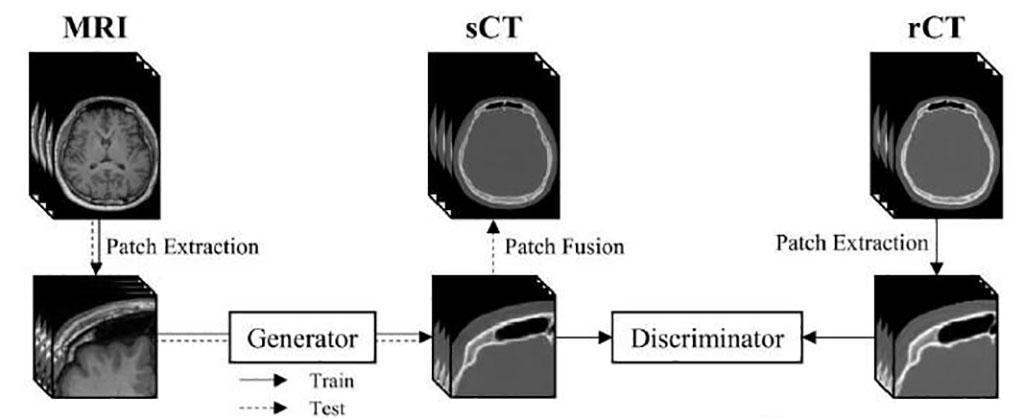Synthetic CT Images Facilitate Transcranial Focused Ultrasound
By MedImaging International staff writers
Posted on 22 Nov 2021
A new study suggests that simulation of transcranial focused ultrasound (tFUS) acoustic transmission through the scull can be derived from MRI images, eliminating the risks of ionizing radiation.Posted on 22 Nov 2021
Researchers at the Korea Institute of Science and Technology (KIST; Seoul, Republic of Korea), the Catholic University of Korea (Seoul, South Korea), and other institutions developed a three-dimensional conditional adversarial generative network (3D-cGAN) algorithm that learned to transform T1-weighted magnetic resonance imaging (MRI) scans into non-linear CT images.

Image: Schematic diagram of training and test flow of synthetic CTs (Photo courtesy of KIST)
To do so, they optimized neural network performance by comparing the changes in quality of the synthetic CT images according to the normalization methods of MRI image signals. Image quality was assessed on 15 test subjects, with no significant differences between simulated and real CT. There was less than 4% difference in intracranial peak acoustic pressure ratio, and the distance between focal points was less than one mm. The study was published on August 13, 2021, in IEEE Journal of Biomedical and Health Informatics.
“Transcranial focused ultrasound procedure could be performed with MRI alone. Patients can now receive treatment without being worried about radiation exposure, and as the additional imaging and alignment processes can be omitted, this will reduce the staff's workload, leading to a reduction in time and economic costs,” said senior author Hyungmin Kim, PhD, of the KIST Bionics Research Center. “We plan to continue developing the technology for its applicability in various treatment technologies.”
tFUS is a promising non-invasive technique for treating neurological and psychiatric disorders. One of the challenges of tFUS is disruption of wave propagation through the skull, making it imperative to understand each patient's skull density ratio and thickness in advance to calculate treatment. As a result, and despite the risks associated with exposure to ionizing radiation, CT imaging is required in order to estimate the acoustic transmission through the skull.
Related Links:
Korea Institute of Science and Technology
Catholic University of Korea














